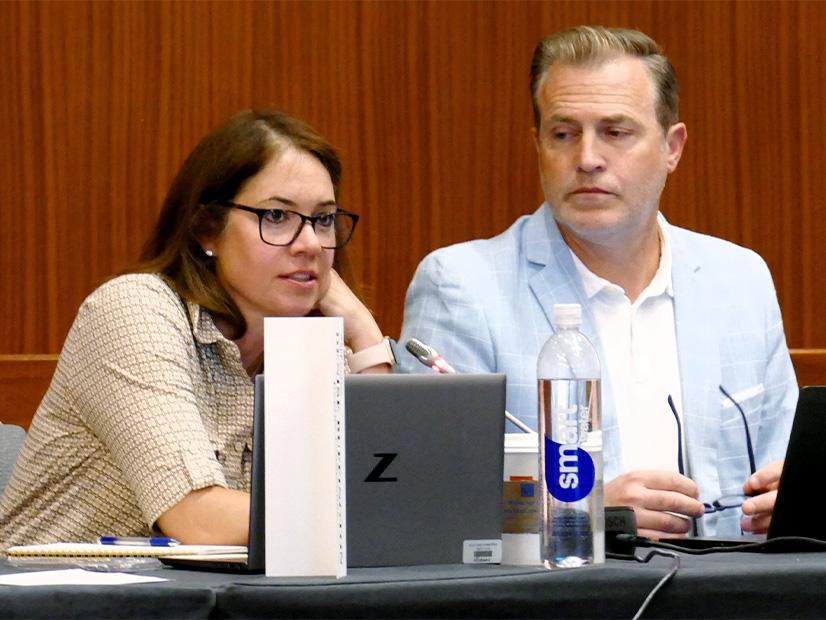
DALLAS — Now that SPP has set planning reserve margins for the 2026 summer and 2026/27 winter seasons, the grid operator has turned its attention to setting up a longer-term PRM.
“We’ve got to get that done so that we can help our members better prepare for what’s coming,” COO Lanny Nickell said during a recent Resource Energy and Adequacy Leadership (REAL) Team meeting.
Referring to comments made by SPP Board Chair John Cupparo after the directors approved the PRMs despite stakeholder pushback, Nickell said he’s received support for a governing structure to advise staff and ensure upcoming resource adequacy work is coordinated. (See SPP Board of Directors/RSC Briefs: Aug. 5-6, 2024.)
During the August board meeting, Cupparo told directors and stakeholders it appeared necessary to establish the longer-term PRM with “defined mechanisms” to assess and adjust the reserve margin at a “reasonable” interval. He also mentioned implementing regional load forecasting capabilities; strengthening SPP’s roles in bringing generation online faster and building transmission; and continuing to develop outward communication “to those who rely on us” and who can help in the infrastructure build.
“All of these items have either been proposed or are in flight,” Cupparo said in August. “The question is whether some or all should be under a single program management structure with a single point of oversight to ensure we get the necessary outcomes in a timely manner. This is a big ask, but we are facing a generational challenge.”
Working with the board, Nickell drew up a senior-level steering committee to perform that task. He said the group will deliver an action plan or project plan to SPP’s board and state commissioners’ committee in October. It then will oversee the work and “make sure it happens,” Nickell said, noting he sees the group as filling an advisory role and not circumventing the stakeholder process.
The committee is composed of REAL Team Chair Kristie Fiegen, who also chairs the South Dakota Public Utilities Commission — “Congratulations, Kristie,” Nickell said as he read off the names — the Markets and Operations Policy Committee chair; ITC Holdings’ Alan Myers and then Omaha Public Power District’s Joe Lang in 2025; Cupparo as the Strategic Planning Committee’s chair; and Nickell as SPP’s executive sponsor.
“How do we make sure all of this stuff happens in a timely manner?” Nickell asked rhetorically. “It kind of boils down to prioritization and actuation. How do we generate the ideas? How do we make sure those ideas are actually executed in a timely fashion? We’ve got to have more generation, we’ve got to have more transmission, and we need it faster.”
He addressed stakeholders nervous about being able to meet future PRM increases, saying it can be challenging to “move the needle in a big way in the stakeholder environment we’re in.”
“That’ll be part of our challenge,” Nickell said. “We’re going to continue to rely on the stakeholder groups. This steering committee is not a solution committee, right? We’re not coming up with the answers. We just need to make sure that answers are being developed in a timely fashion.”
Demand Response RR Paused
The REAL Team had only one voting item during the Aug. 21 meeting, unanimously agreeing to direct the Supply Adequacy Working Group to pause its early work on a tariff change related to demand response. The team said it will determine a path forward to a holistic solution.
Texas Public Utility Commission staffer Shawnee Claiborn-Pinto abstained from the vote.
The SAWG had been working on a revision request (RR618) intended to accurately account for potential increases in demand-response loads claimed by load-responsible entities (LREs) to satisfy their resource adequacy requirement. The change includes a performance mechanism to accurately accredit DR programs based on their performance.
SPP’s Chris Haley said the SAWG had made progress on the policy package but hit a roadblock after it began receiving load projections from LREs as part of a survey of 2029 resource plans.
“This is going to send a (five-year) signal, but there’s a lot of moving pieces here. It was kind of shocking for us, at least when we saw the amount of load growth that’s being projected for 2029 from the ’23 to ’24 submittals,” he said. “Some of that roadblock was around the ability to have market oversight, or ops oversight and insight into these programs. There was some pushback on doing full market registration for demand response that was being submitted for resource adequacy. There is some demand response in the market today, but right now, that demand response is not being submitted for resource advocacy. It is purely a market product today.”
“Regardless of what we do with [DR’s] Phase 1, I think our very next step is to better understand the magnitude of the potential operations issue,” SPP’s Natasha Henderson said. “Resource adequacy is long-term planning. It’s based upon a lot of different information and it’s a good guess, right? In my mind, I think we just shouldn’t lose sight of the fact that we need to keep the lights on in real time, and I think we need some agreement on what that is, what that means for demand response.”
The resource plans indicate a net increase of about 3,000 MW of installed generation by 2029, much of it thermal. That is balanced out by a 3,000-MW increase in forecasted peak demands.
The SAWG expects to bring a recommended long-term PRM to the REAL Team’s November meeting.



